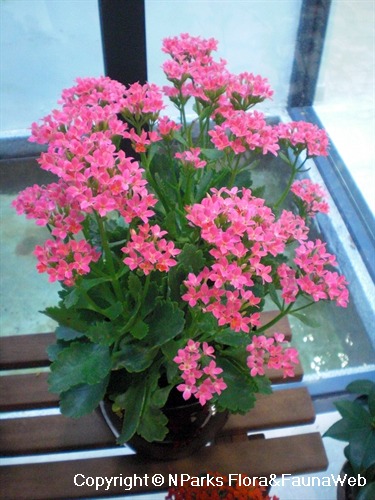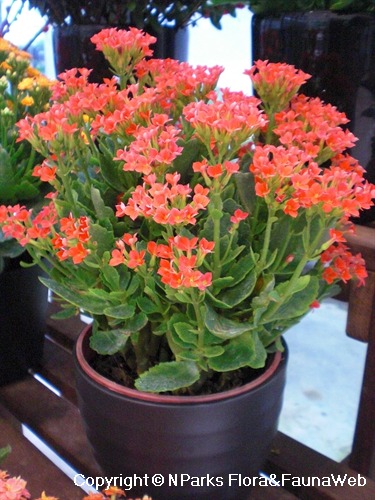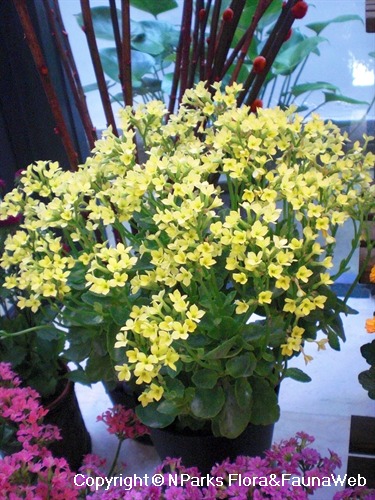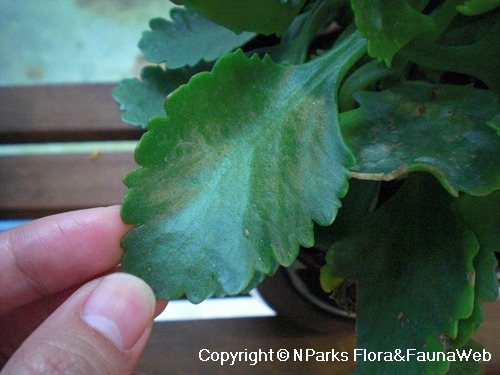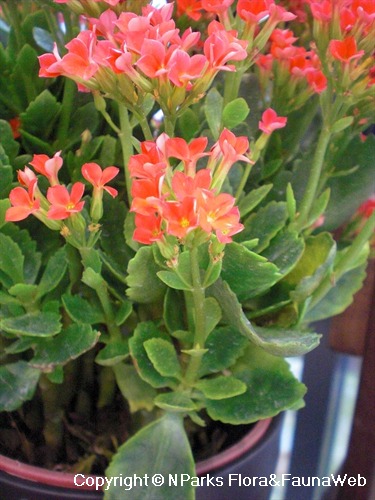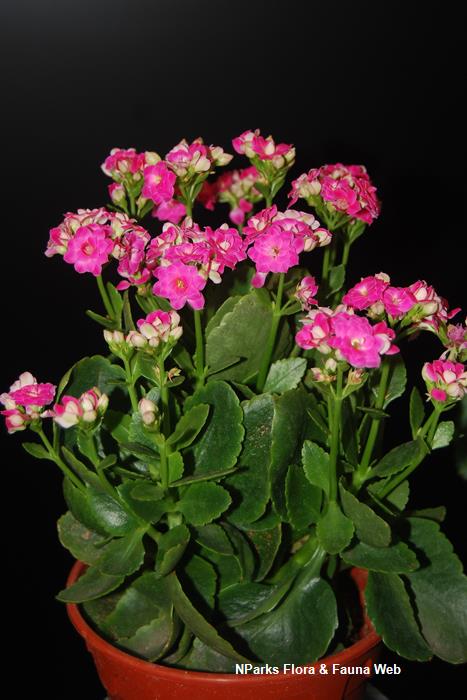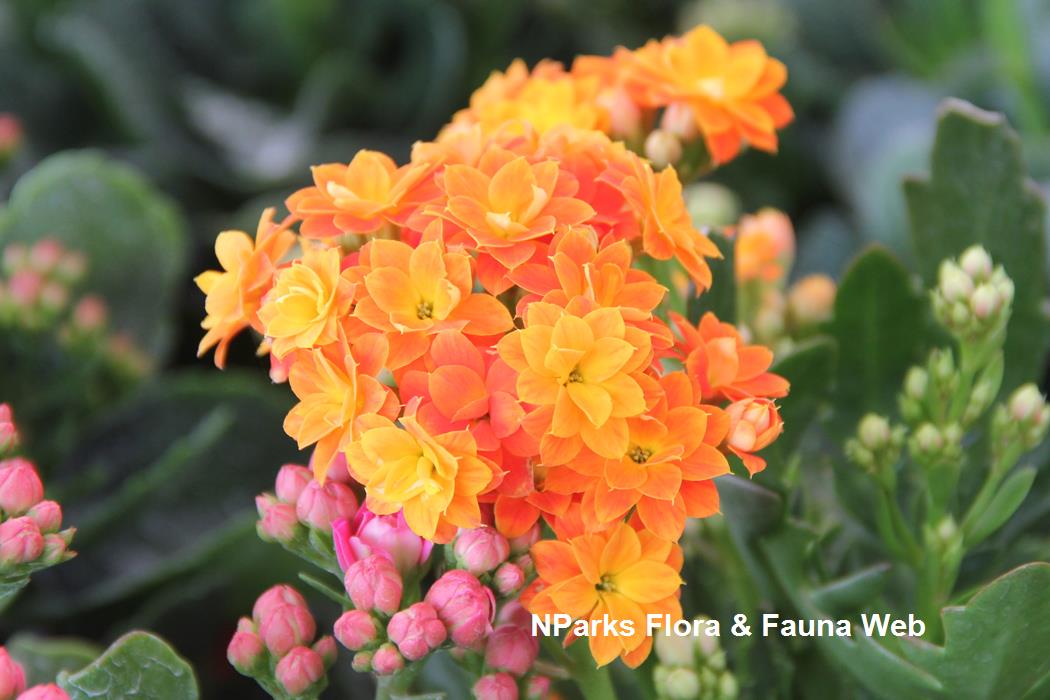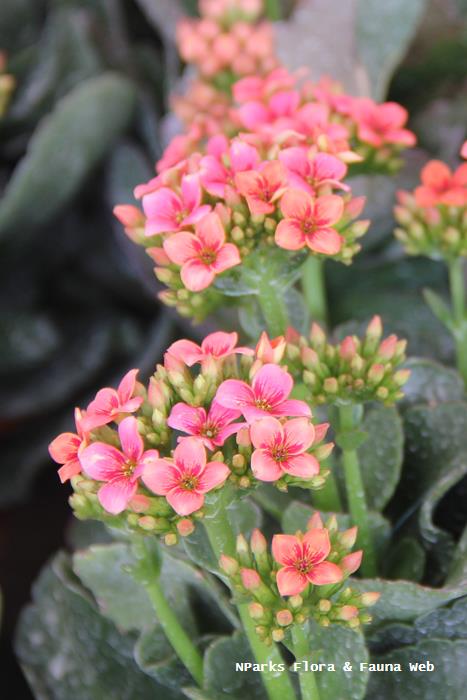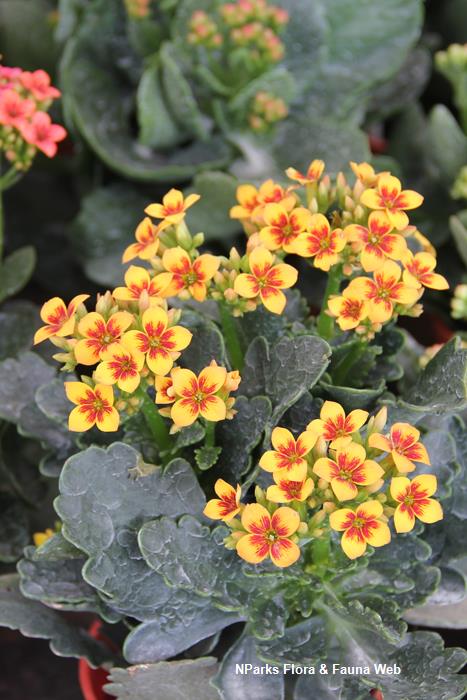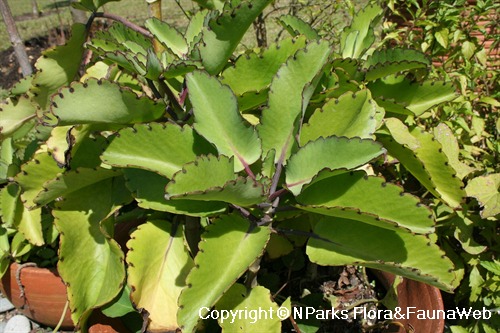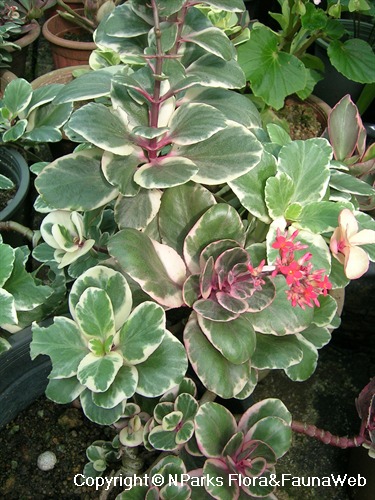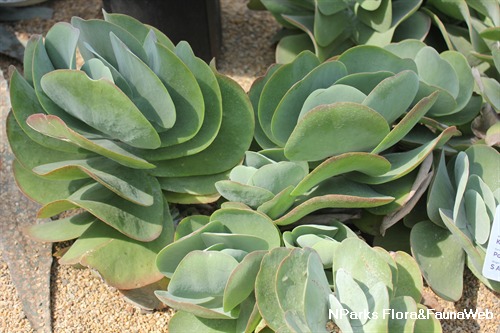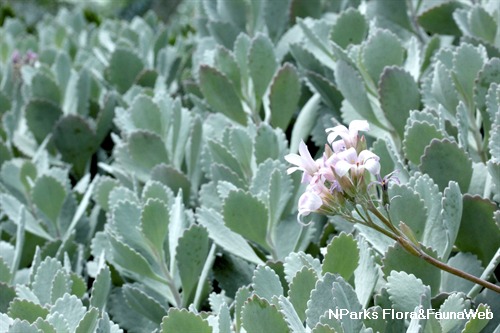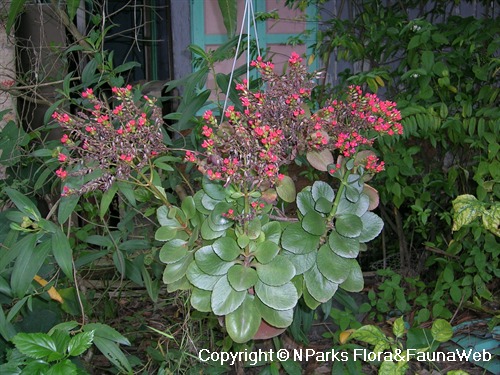
Back
Kalanchoe blossfeldiana Poelln.
| Family Name: | Crassulaceae |
| Synonyms: | Kalanchoe coccinea var. bossfeldiana |
| Common Name: | Christmas Kalanchoe, Flaming Katy, 万紫千红 |
Name
Classifications and Characteristics
| Plant Division | Angiosperms (Flowering Seed Plants) (Dicotyledon) |
|---|---|
| Plant Growth Form | Herbaceous Plant |
| Mode of Nutrition | Autotrophic |
| Maximum Height | 0.30 m to 0.45 m |
Biogeography
| Native Distribution | Madagascar |
|---|
Description and Ethnobotany
| Others - Plant Morphology | Kalanchoe blossfeldiana is succulent plant with thick fleshy stems and leaves. It is commonly grown as a potted plant indoors in Singapore. Leaves are ovate in shape, oppositely arranged along the stem. Flowers are small, 4-petalled, about 1 cm across, usually bloom in November or December in Singapore and last around 4 weeks. A short day plant, it requires at least 6 weeks of 14 hr nights to induce flowering. Flowers can be red, pink, dark pink, yellow or white, depending on hybrids. The colours of the flowers can be enhanced under bright sunlight. May be propagated using stem or leaf cuttings and those grown from cuttings grow faster and better than those from seeds. New plantlets may grow on leaf margins occasionally. When watering the plant, wait for the water to be fully absorbed before re-watering as over-watering may cause stem rot. Plants are not frequently attacked by pests, but continue to keep a look out for mealy bugs, mites, aphids and caterpillars. |
|---|---|
| Ethnobotanical Uses | Others: The bright and vibrant colours of the flowers are regarded as auspicious to the Chinese, thus the plant is selected as one of the festive flowers alongside others such as azaleas and camellias during the Lunar New Year in Singapore. As a perennial, the plant continues to grow after the festive season though it would be tough to get it to re-bloom. Thus, it is usually discarded after the flowers wither. |
Landscaping Features
| Desirable Plant Features | Ornamental Flowers |
|---|---|
| Landscape Uses | Container Planting, Interiorscape/ Indoor Plant, Flowerbed / Border |
| Usage Hazard - Cons | Toxic Upon Ingestion |
Plant Care and Propagation
| Light Preference | Semi-Shade, Full Sun |
|---|---|
| Water Preference | Little Water |
| Plant Growth Rate | Moderate |
| Rootzone Tolerance | Well-Drained Soils, Saline Soils / Salt Spray |
| Maintenance Requirements | Low |
| Propagation Method | Stem Cutting, Leaf Cutting, Air-Layering |
Foliar
| Foliage Retention | Evergreen |
|---|---|
| Mature Foliage Colour(s) | Green |
| Mature Foliage Texture(s) | Glossy / Shiny, Thick |
| Foliar Type | Simple / Unifoliate |
| Foliar Arrangement Along Stem | Opposite |
| Foliar Shape(s) | Non-Palm Foliage (Ovate, Obovate) |
| Foliar Margin | Crenate |
| Leaf Area Index (LAI) for Green Plot Ratio | 4.5 (Shrub & Groundcover - Dicot) |
Non - Foliar and Storage
| Stem Type & Modification | Herbaceous |
|---|
Floral (Angiosperm)
| Flower & Plant Sexuality | Bisexual Flowers |
| Flower Colour(s) | Red |
|---|---|
| Flower Lifespan on Plant | Several Weeks |
| Flowering Habit | Polycarpic |
Image Repository
Others
| Master ID | 872 |
|---|---|
| Species ID | 2167 |
| Flora Disclaimer | The information in this website has been compiled from reliable sources, such as reference works on medicinal plants. It is not a substitute for medical advice or treatment and NParks does not purport to provide any medical advice. Readers should always consult his/her physician before using or consuming a plant for medicinal purposes. |

